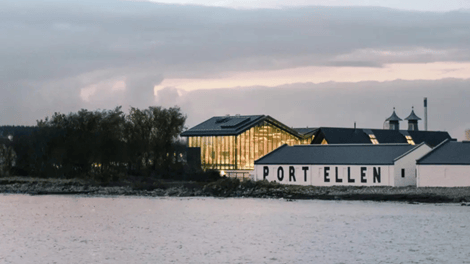- Reminders
- Whisky
- Blog

The Impact of Different Types of Oak on the Flavour of Whisky

Each whisky expression has a unique combination of aromas and flavours. There are plenty of factors that contribute to this, but one that truly brings out the complexity of a whisky is the oak cask in which it matures. The type of oak that a cask is made of plays a crucial role in shaping the spirit’s final profile and allows for an abundance of opportunities for distilleries to create the perfect blend of flavours for their expressions.
The Importance of Oak in Whisky Maturation
The casks that whisky matures in are made of oak due to its unique properties. Its density allows for a controlled exchange between the whisky and the wood, facilitating a slow and nuanced maturation process. Here, the whisky gradually extracts compounds from the oak, changing the whisky’s flavour, aroma, and colour.
Types of Oak and Their Flavour Contributions
American Oak (Quercus alba)
American oak is perhaps the most well-known variety used in whisky production and is primarily used for bourbon production in the U.S. Its coarse grain facilitates rapid extraction, and its high vanillin content leads to flavours of vanilla, caramel, and butterscotch. Whiskies matured in American oak often exhibit a lighter body and a sweeter profile, appealing to a wide range of palates.
U.S. law states that whisky casks can only be used once in the bourbon industry; since there is still plenty of flavour remaining in these barrels, many of them are exported to Scotland to be refilled and used to age scotch whisky. For example, Laphroaig uses ex-bourbon casks from Maker's Mark, which adds a caramel sweetness and other distinct notes to Laphroaig’s whisky.

The Laphroaig 36-Year-Old (The Archive Collection), which was first aged in ex-bourbon American oak casks. Photograph from Laphroaig.
European Oak (Quercus robur)
European oak, on the other hand, offers a contrasting flavour profile. Commonly used for sherry and wine casks, this type of oak has a tighter grain, which results in slower extraction of flavours. Whiskies aged in European oak are typically richer and more complex, with notes of dried fruits, nuts, spices, and even dark chocolate. The tannins present in European oak contribute to a fuller mouthfeel, giving whiskies aged in these casks further depth and intricacy.
More specifically, sherry casks contribute complex flavours of dried fruits, nuts, and spices. These casks are usually less reactive due to previous ageing, providing a subtler influence in subsequent whisky maturation.

This Macallan whisky, distilled in 1993, is currently maturing in an ex-sherry cask. The Macallan’s Sherry-Seasoned casks take approximately six years to create and play a leading role in delivering the distinctive character, flavours and natural colour of the distillery’s whiskies.
Japanese Oak (Mizunara, Quercus crispula)
Less common but increasingly popular, Japanese oak (Mizunara) brings unique flavours to whisky. Its porous structure allows for significant interaction with the environment, resulting in a more aromatic spirit. Whiskies aged in Mizunara often present exotic flavours like sandalwood, coconut, and spices. Due to its rarity and the difficulty in sourcing and working with Mizunara, it is typically found in limited releases or premium bottlings.
For example, Yamazaki Distillery is well-known for their use of Japanese Mizunara casks. They produce both blended expressions and whiskies that are aged solely in Mizunara casks, such as the Yamazaki Mizunara 18-Year-Old.

Photograph from the House of Suntory.
The Art of Multi-Cask Maturation
One of the most exciting trends in whisky production, and a technique often used by distilleries to create whiskies with very specific and unique flavour profiles, is multi-cask maturation. This involves ageing the spirit in more than one type of cask, allowing for a complex mix of flavours that cannot be achieved with a single cask.
For example, the Glenmorangie Dr Bill Lumsden X Azuma Makoto 23-Year-Old was created to celebrate the wonder and complexity of nature, especially the natural environment surrounding the Glenmorangie distillery. To convey this in the flavours of the whisky, the classic Glenmorangie, long aged in ex-bourbon casks, was mixed with whisky finished in ex-Chardonnay white wine casks from Burgundy, France. This resulted in an expression that is sweet, floral, and earthy.

Photograph from Glenmorangie.
Another example is the Glenfiddich 29-Year-Old Grand Yozakura, the first Single Malt scotch whisky finished in Japanese Ex-Awamori casks. This expression was aged in American oak casks for 29 years, then finished in the Ex-Awamori casks, which complements the smooth Glenfiddich taste profile and gives the expression unique and exotic herbal notes.

Photograph from The Grid Asia.
Conclusion
The choice of oak in whisky maturation is a fundamental factor that significantly impacts the final flavour profile and complexity of the spirit. The oak cask that a whisky is matured in can help reveal the story of the spirit from within and allows distilleries to create completely new and unique flavour combinations. The next time you enjoy whisky, consider the impact that the cask has had on that expression’s flavours and aromas – we're sure it’ll be an eye-opening experience!
All the bottles and casks mentioned above are great examples of how a whisky’s flavour profile can be impacted by the type of oak that a cask is made of. They are all available now on WhiskyGenius, as well as various other expressions from the world’s top distilleries, for you to enjoy for yourself!
Enjoy whisky responsibly.
Banner photograph from Annandale Distillery.
More Content
View More



















